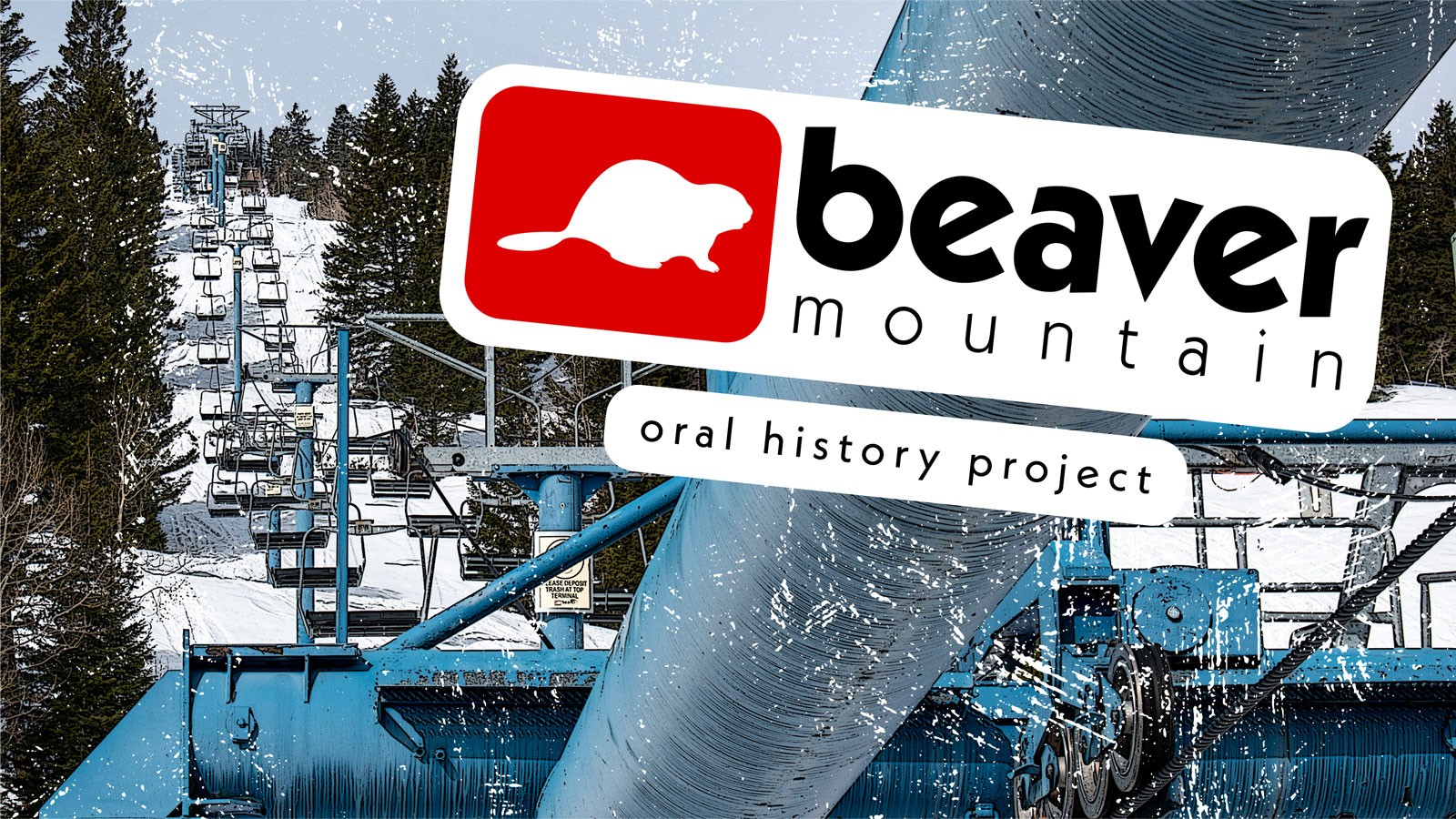Beaver Mountain's History Celebrated in New Digital Collection at USU
By Kellianne Gammill |
Utah State University Libraries and representatives from Beaver Mountain ski resort have come together to produce a new digital collection highlighting the history of the resort.
Located 27 miles up the canyon from Logan, the Beaver Mountain Ski Resort has been a central part of Cache Valley’s winter sports community since 1939. The resort is also popular with Utah State University students, who can take skiing and snowboarding classes there.
Despite the resort’s important place in Utah’s ski history and culture, it has typically received less attention from historians and other researchers than larger resorts in the state. Graduate students from Lisa Gabbert’s spring 2022 seminar in oral history and folklore fieldwork set out to rectify this in a project focused on Beaver Mountain, its history, and its place in the community. They photographed the people, buildings and machines that have kept Beaver Mountain running and conducted interviews with a wide variety of people with connections to Beaver Mountain, including employees, instructors, guests, community partners and ski patrol volunteers.
“I think the coolest part about Beaver is the community,” says Tom Lau, one of the project’s interviewees and a USU student who has frequented the resort since his childhood.
Several of the project’s other interviewees came from the Seeholzer family. The Seeholzers were the driving force behind the resort’s creation and are responsible for the resort’s status as the longest-running family-owned resort in the country.
In Marge Seeholzer’s interview, she recalls working in different roles around the resort — at times for no pay — and getting to know local skiers and families. Although she is now the resort’s president, she can still often be found running the ticket office on the mountain. And in his interview, Jeff Seeholzer discusses growing up with Beaver Mountain and his family’s work improving the resort, which included installing ski lifts themselves.
Another person interviewed by the graduate researchers was Alex Ristorcelli, the program director for Common Ground Outdoor Adventures. Common Ground is a local nonprofit organization devoted to providing outdoor recreation opportunities for people with disabilities. The organization currently owns a building on the mountain, and in his interview, Ristorcelli describes the consistent support from Beaver Mountain that Common Ground has received for its winter and summer activities at the resort.
For other people, their involvement with Beaver Mountain began through less formal commitments that grew into long-term connections.
“I started at Beaver as just a ski instructor for about 10 years, and then went to director. I meant to do that for about three years or so, and I'm here 21 years later,” says Debbie Tarboton, the director of Beaver Mountain’s ski school. “It’s very much a family feel. You know everybody.”
In a similar story, a man visiting Beaver to take his son snowboarding recognized an old friend behind the counter at the ski shop. Because it was a busy day, the man started helping out his friend in the shop. Following this, he took a part-time job in the shop that he has remained at for 15 years. This story is told by Eric Bishop, a long-time ski patroller and patron of the resort, in his interview.
As Beaver Mountain has grown from a resort with a single tow rope powered by an old automobile engine to a resort with four chair lifts today, it has also attracted more guests. In the interviews, ski patrol volunteers discuss the resort’s growth over the years and speculate how it will continue to change into the future. Several interviewees also explain how the COVID-19 pandemic brought extra business to the resort as skiers and snowboarders from more crowded resorts along the Wasatch Front began frequenting Beaver Mountain.
A new digital history collection created to house the materials from this project contains the photos and original recordings of these interviews, along with the interview transcriptions, which were created with help from a Utah Humanities Council Oral History Grant.
New materials will be added to the collection as Gabbert and students in a second oral history and folklore fieldwork seminar in 2024 continue their research on Beaver Mountain.
WRITER
Kellianne Gammill
Public Relations Specialist
University Libraries
(435) 797-0555
kellianne.gammill@usu.edu
TOPICS
Utah 371stories Business 155stories History 138stories Humanities 117stories Outdoor 79storiesComments and questions regarding this article may be directed to the contact person listed on this page.







